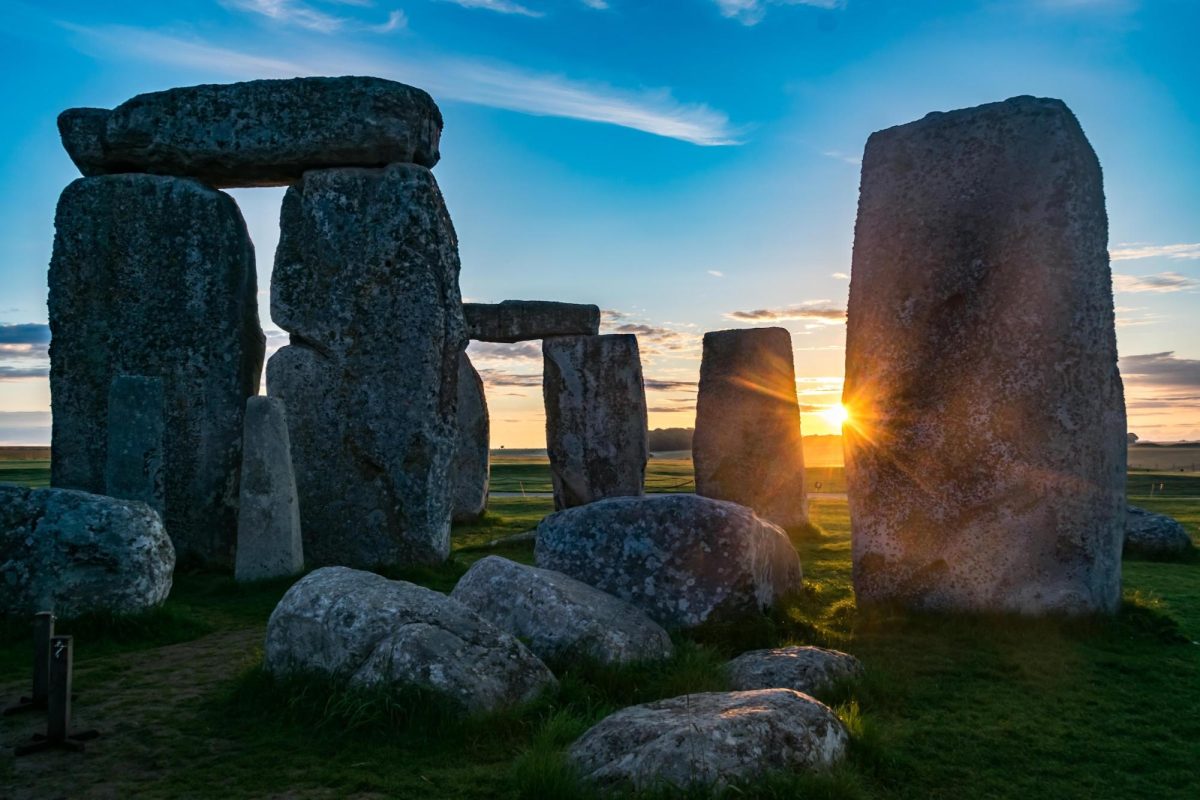As we leave another year and winter break behind and try to readapt to our routines as students, I want to reflect on the feeling that I always have during the first week of Winter Quarter. It is the bitterness of getting back to campus and realizing that there are no longer Christmas decorations in town, no more festive trees around the streets, holiday colored cups in coffee stores, winter-themed designs on shopping bags, or Christmas carols playing everywhere we go. Instead, as we seek to maintain the joy from the holidays, we have our new schedules and goals and start planning how we can make our dreams come true.
Like so many people I know, I love thinking about the future. Inspired by my trip to London during the holidays, I would first like to discuss the ancient traditions that shape our New Year’s beliefs today. My trip had a quite heavy itinerary of museums, archeological sites, and old bookstores, in addition to popular destinations and meeting up with friends. Even though not everything turned out as I planned, since the holiday season, travel season, and virus season are parallel to each other, I still tried my best to have a great lead-up to the new year.
I arrived in London right before the winter solstice. Winter solstice was on Dec. 21 this year and is the day when we see the shortest daylight. After the solstice, days begin to get longer and nights get shorter; the weather becomes warmer, and we begin to see the sun more often. There were many ancient festive celebrations (referring mostly to the Sun God) during the winter solstice, and mythological stories about them survive to this day. For example, in ancient Rome, they celebrated Saturnalia, and in the later Cult of Mithra, they celebrated the birth of their God on Dec. 24 and Dec. 25. With that in mind, The London Mithraeum, also known as the Temple of Mithras, is definitely a place I would recommend visiting.
I would also like to mention one of the most enchanting places on Earth known as Stonehenge. Stonehenge is a prehistoric monument and an archeological site located in Wiltshire, England, about two hours from London by car, where Celtic people lived thousands of years ago. Further, Stonehenge is known to be one of the sacred places of the Druids. Thanks to the 2008 BBC TV series “Merlin,” the name ‘Druid’ is not uncommon for many of us. Druids were the priestly class in old Celtic religion and culture, and they still perform rituals at Stonehenge at dawn on Dec. 22 to celebrate the rebirth of the Sun. Even though I couldn’t make it to the solstice celebrations this year, it is definitely on my bucket list for next year.
I also want to share two popular symbols of this time of year that I grew up with: Christmas trees and Santa Claus. So, let’s dive into their ancient roots.
For most of us today, the Christmas tree is an indispensable symbol of Christmas. In Turkey, where I grew up, we did not call it a Christmas tree because the majority of us weren’t celebrating Christmas. Instead, we called it the “New Year’s Tree.” As native cultures have done for thousands of years, it’s a generations-long tradition in my family to decorate the New Year’s tree at the beginning of December. Even though it is the darkest and the coldest time of the year, the New Year’s tree symbolizes hopes for the future: longer and warmer days and an abundant and fruitful upcoming harvest. Around the world — but more specifically in the Northern Hemisphere — there are many similar traditions. For example, ancient Scandinavians decorated evergreen trees. Alternatively, in drier geographies such as in Middle Asia, they were satisfied with an evergreen bough.
It is believed that the “Christmas tree” was made popular by the religious reformer Martin Luther in the 16th century. The common story is that, while Luther was walking home in the evening, he saw sparkling stars over the evergreens. Enchanted, he was inspired to put a tree in his home. The old religion says that the star is a sacred symbol of the human. Thus, putting a star at the top of the New Year’s tree can symbolize different things to different people, Martin Luther’s (a Christian) version being one of many.
When it comes to the big, fat man with a long white beard, there are many different ancient representations believed to be the blueprint for today’s Santa. The first one is Odin. According to Norse mythology, Odin is known to be the Norse God of war and death who lost one eye on the path of wisdom. Some view Odin as an animalistic Santa who sends gifts to children during the winter solstice. Another example is Ayaz Ata, a winter god in Tengrism from Turkish culture, who is also depicted with a long white beard and robe. And finally, most of us have heard of Santa’s connections to Saint Nicholas. Fra Angelico’s painting of Saint Nicholas is one of the few early depictions of Saint Nicholas in a red robe, the iconic image of Santa that appeared much later in a 1930s Coca-Cola advertisement.
These New Year’s traditions are a great example of how, even without technology, different cultures can connect with each other. It was the season for our hopes, and now, it is the season to make all of our wishes come true.








